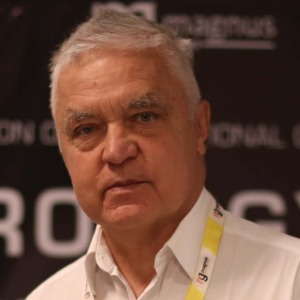Tau Protein
Tau protein is an important protein in the human body that helps maintain the function and structure of neurons. It plays a role in microtubule assembly, stabilization, and transport. Microtubules are essential for cell division, transport of organelles and materials, and neuronal signaling. Specifically, tau proteins bind to tubulin molecules and organize the microtubules into bundles which stabilize thecytoskeleton. Tau proteins come in two forms—3R and 4R. 3R tau is more predominant in humans, while 4R tau is the more prevalent form in other species and in humans with certain neurological conditions. Mutations in the tau gene can cause a variety of conditions, including dementia, Alzheimer’s disease, frontotemporal lobar degeneration, and progressive supranuclear palsy. In healthy people, tau helps regulate the structure and function of neurons, which are responsible for storing and transmitting information throughout the body. In Alzheimer’s disease, however, tau proteins begin to accumulate in the axon of neurons, forming neurofibrillary tangles. These tangles interfere with the normal function of neurons, resulting in memory and cognitive impairment. Another implication of tau proteins is the process of aggregation. When tau proteins become chemically modified, they are prone to clustering and forming fibers called paired helical filaments. These fibers, in turn, form insoluble aggregations called neurofibrillary tangles, which are a hallmark of Alzheimer’s disease and other neurological disorders. Tau proteins and its related diseases are the subject of scientific investigation, as research continues to explore its functions and potential therapies. Tau proteins have been used to target therapies for Alzheimer’s disease, stroke, and other neurological diseases. Understanding the nuances of its role in neuronal health and disease could lead to improved treatment modalities for debilitating neurological conditions.

Ken Ware
NeuroPhysics Therapy Institute, Australia
Robert B Slocum
University of Kentucky HealthCare, United States
Yong Xiao Wang
Albany Medical College, United States
W S El Masri
Keele University, United Kingdom
Jaqueline Tuppen
COGS Club, United Kingdom
Milton Cesar Rodrigues Medeiros
Hospital Santa Casa de Arapongas, Brazil




Title : Perception and individuality in patient cases identifying the ongoing evolution of Myalgic Encephalomyelitis/Chronic Fatigue Syndrome (ME/CFS)
Ken Ware, NeuroPhysics Therapy Institute, Australia
Title : Narrative medicine: A communication therapy for the communication disorder of Functional Seizures (FS) [also known as Psychogenic Non-Epileptic Seizures (PNES)]
Robert B Slocum, University of Kentucky HealthCare, United States
Title : Personalized and Precision Medicine (PPM), as a unique healthcare model through biodesign-driven biotech and biopharma, translational applications, and neurology-related biomarketing to secure human healthcare and biosafety
Sergey Victorovich Suchkov, N.D. Zelinskii Institute for Organic Chemistry of the Russian Academy of Sciences, Russian Federation
Title : Neuro sensorium
Luiz Moutinho, University of Suffolk, United Kingdom
Title : Traumatic Spinal Cord Injuries (tSCI) - Are the radiologically based “advances” in the management of the injured spine evidence-based?
W S El Masri, Keele University, United Kingdom
Title : Scalp acupuncture with functional electrical stimulation for the treatment children with autism spectrum disorder
Zhenhuan Liu, Guangzhou University of Chinese Medicine, China